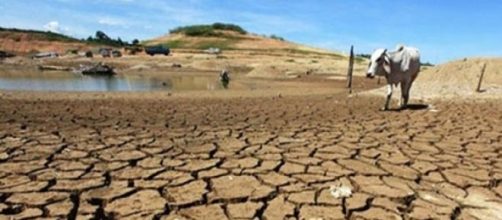The notion of sustainable development concerns three dimensions: social, economic and environmental. The last dimension is linked to the fact that our actions are limited by environmental constraints and planetary boundaries. Key concepts to consider when looking at issues of environmental sustainability are those of "fairness" and "justice". After all, sustainable development and environmental protection are just words used to describe the need to balance trade-offs between society, economy and environment in interpersonal, inter-societal, inter-biological and inter-generational ways.
The main challenge that the international community has to face in matter of sustainable development appears as follows: since industrialised countries advanced in the past generating extremely high levels of pollution, how can we guarantee the economic growth of poor countries while protecting the environment?
Meaningfully, 2015 is defined by many leading figures of the development community as a turning point in terms of sustainable development. This is the year that might find an adequate answer to the "sustainable development dilemma". In the coming months, the United Nations' old Millennium Development Goals (MDGs) will be replaced by the Sustainable Development Goals (SDGs); the Conference on Financing for Sustainable Development, held in Addis Ababa, will focus on economic issues related to international development.
The Paris Conference on Climate Change in December will define the second binding treaty on carbon emissions after the Kyoto Protocol in 1997.
Climate change has been increasingly included as a "hot topic" in many countries' political agendas since the Stern Review warned the international community on the necessity to tackle the risks related to climate change. The review reported climate change can induce losses equivalent to a percentage of 20% of the global GDP. Ever since that moment, the fight against climate change consequences now concerns three aspects: "mitigation", "adaptation", "loss and damage". Mitigation relates to the need to prevent future impacts of climate change. Adaptation is based on the acknowledgment that it is impossible to prevent, but rather is necessary to adapt and prepare for the impacts of climate change.
Finally, the area of loss and damage was created in 2012 in order to identify each county's historical responsibility for the negative impacts of climate change that affect our planet.
As a preparatory phase for the Paris Conference, the last round of negotiations on climate change was held in Lima, Peru, in December 2014. The major goal reached in this occasion was the reaffirmation of the principle of "common but differentiated responsibility" (CBDR). After nearly 40 extra-hours of negotiations between national governments, the CBDR was reinserted into the text of the United Nations Framework Convention on Climate Change (UNFCCC), establishing common objectives but differentiated responsibilities among countries in relation to the weight that national actors have played in creating climate change-related impacts.
According to the International Energy Agency, in the past five years Organisation for Economic Co-operation and Development (OECD) countries have achieved an average of seven per cent growth at the same time as a four per cent reduction in greenhouse gas emissions. These data outlines a positive trend in the international scenario of climate change negotiations. Paris grants numerous opportunities but also a number of challenges that will shape the new agreement.
Reaching a universal agreement that will limit the rise in average global temperatures to 2 degrees Celsius compared to the pre-industrial period by the end of the century, is an enormous goal to achieve. Yet, progress in multilateral politics, policy implementation and technology development suggest that Paris can and must succeed.

